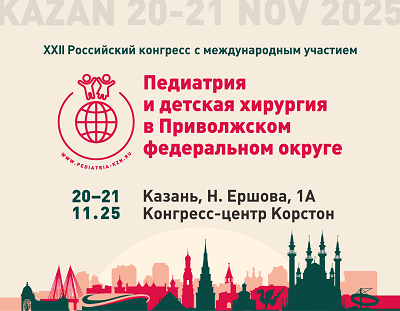Health status of children born from pregnant women with placenta accreta
https://doi.org/10.21508/1027-4065-2023-68-3-21-26
Abstract
One of the frequent causes of massive obstetric bleeding is placenta accreta, an unpredictable and iatrogenic pathology, where maternal mortality varies from 7 to 52%. The purpose of the study: to assess the condition of newborns from pregnant women with placenta accreta.
Material and methods. Seventy pregnant women and their 70 newborns were examined, of which: 40 with placenta accreta and their 40 newborns who made up the 1st group; 30 healthy pregnant women and their 30 newborns who made up the 2nd control group. A retrospective analysis of the course of gestation and perinatal outcomes was carried out. Questionnaire charts were compiled to collect obstetric, gynecological and somatic history. The assessment of newborns was carried out on the Apgar score at the 1st and 5th minutes. Ultrasound and neurosonography of newborns were used.
Results. Analyzing the results of the study, it was found that women with placenta accreta often have a violation of utero-placental-fetal circulation, childbirth ends prematurely, while premature babies are often born in a state of asphyxia. These children have a high incidence of neurological disorders, more complex postnatal adaptation is observed, and concomitant pathology is more often detected.
Conclusion. It is possible that the high frequency of asphyxia and neurological diseases in children born to women with placenta accreta is associated with a violation of utero-placental-fetal circulation during pregnancy and a prematurity. These data are very important not only for obstetricians making it possible to develop tactics for the management and delivery of a pregnant woman with placenta accreta, but also for neonatologists to correctly assess the condition of the fetus, determine the tactics of management and treatment of newborns, as well as including them from an early stage in a high-risk group for neurological disorders.
About the Authors
Kh. M. OmarovaRussian Federation
Makhachkala
R. G. Omarova
Russian Federation
Makhachkala
Derbent
M. A. Osmanova
Russian Federation
Makhachkal
Z. I. Magomedova
Russian Federation
Makhachkala
D. A. Kazakbieva
Russian Federation
Makhachkala
T. Kh.-M. Khashaeva
Russian Federation
Makhachkala
I. Kh. Magomedova
Russian Federation
Moscow
References
1. Barinova I.V., Kondrikov N.I., Voloshchuk I.N. Features of the pathogenesis of placenta ingrowth into the scar after cesarean section. Arkhiv Patologii 2018; 2: 18–23. (in Russ.)
2. Bashmakova N.V., Davydenko N.B., Malgina G.B. Monitoring of obstetric “near miss” in the strategy of development of the maternity service. Rossiskii vestnik akusera-ginekologa 2019; 19(3): 5–10. (in Russ.)
3. Omarova H.M., Omarova R.G., Khashaeva T.H.-M., Magomedova I.H., Rasulov M.T. Morphological structure of the placenta during its increment. Problemy reproduktsii 2022; 28(1): 73–79. (in Russ.)
4. Abukhamad A. Anomalies of placentation. Ultrazbukovaya I funktsionalnaya diagnostika 2016; 2: 70–82. (in Russ.)
5. Bushtyrev A.V., Bushtyreva I.O., Zamanskaya T.A., Kuznetsova N.B., Antimirova V.V. Possibilities of prediction and prevention of massive obstetric bleeding during placenta accretion. Collections of conferences of the National Research Center Sociosphere 2016; 56: 217–219. (in Russ.)
6. Blinov A.Yu., Goltsfarb V.M., Dolgushina V.F. Early prenatal diagnosis of true placental increment. Prenatal’naya diagnostika 2011; 10: 79–84. (in Russ.)
7. Barinov S.V., Medyannikova I.V., Tirskaya Yu.I., Shamina I.V., Shavkun I.A. Placenta increment in the uterine scar area after myomectomy: a combined approach for operative delivery. Rossiiskii vestnik akushera-ginecologa 2018; 18(2): 88–91. (in Russ.)
Review
For citations:
Omarova Kh.M., Omarova R.G., Osmanova M.A., Magomedova Z.I., Kazakbieva D.A., Khashaeva T.Kh., Magomedova I.Kh. Health status of children born from pregnant women with placenta accreta. Rossiyskiy Vestnik Perinatologii i Pediatrii (Russian Bulletin of Perinatology and Pediatrics). 2023;68(3):21-26. (In Russ.) https://doi.org/10.21508/1027-4065-2023-68-3-21-26











































